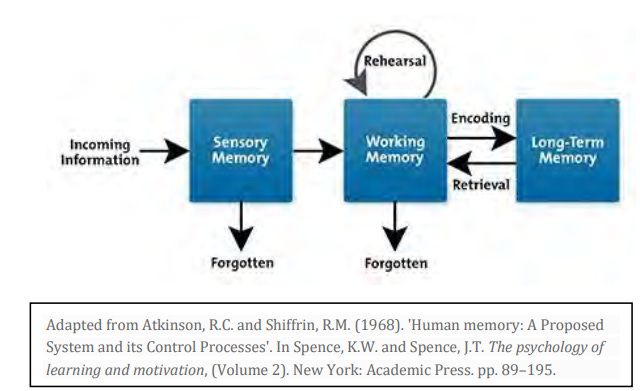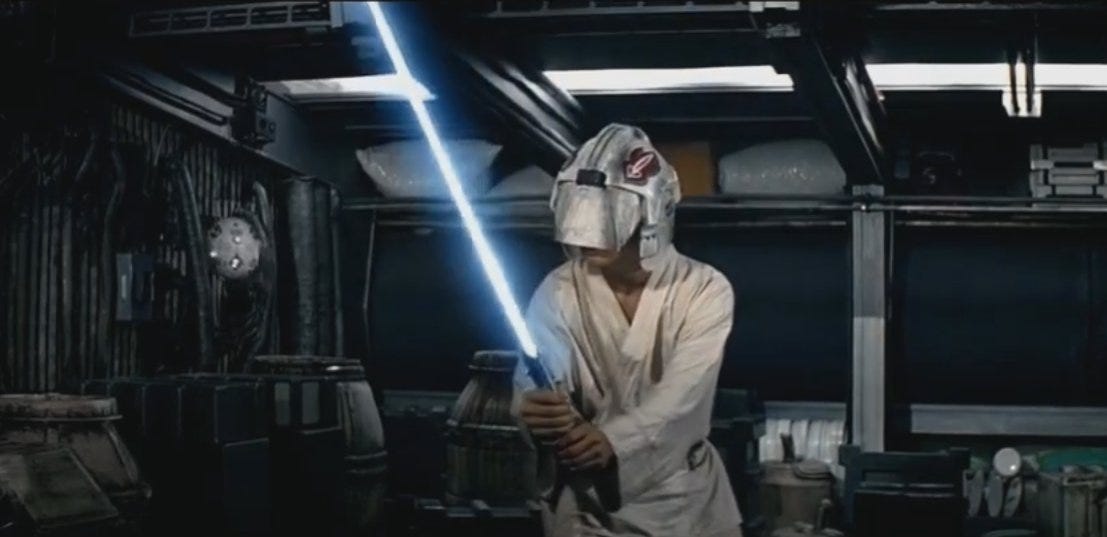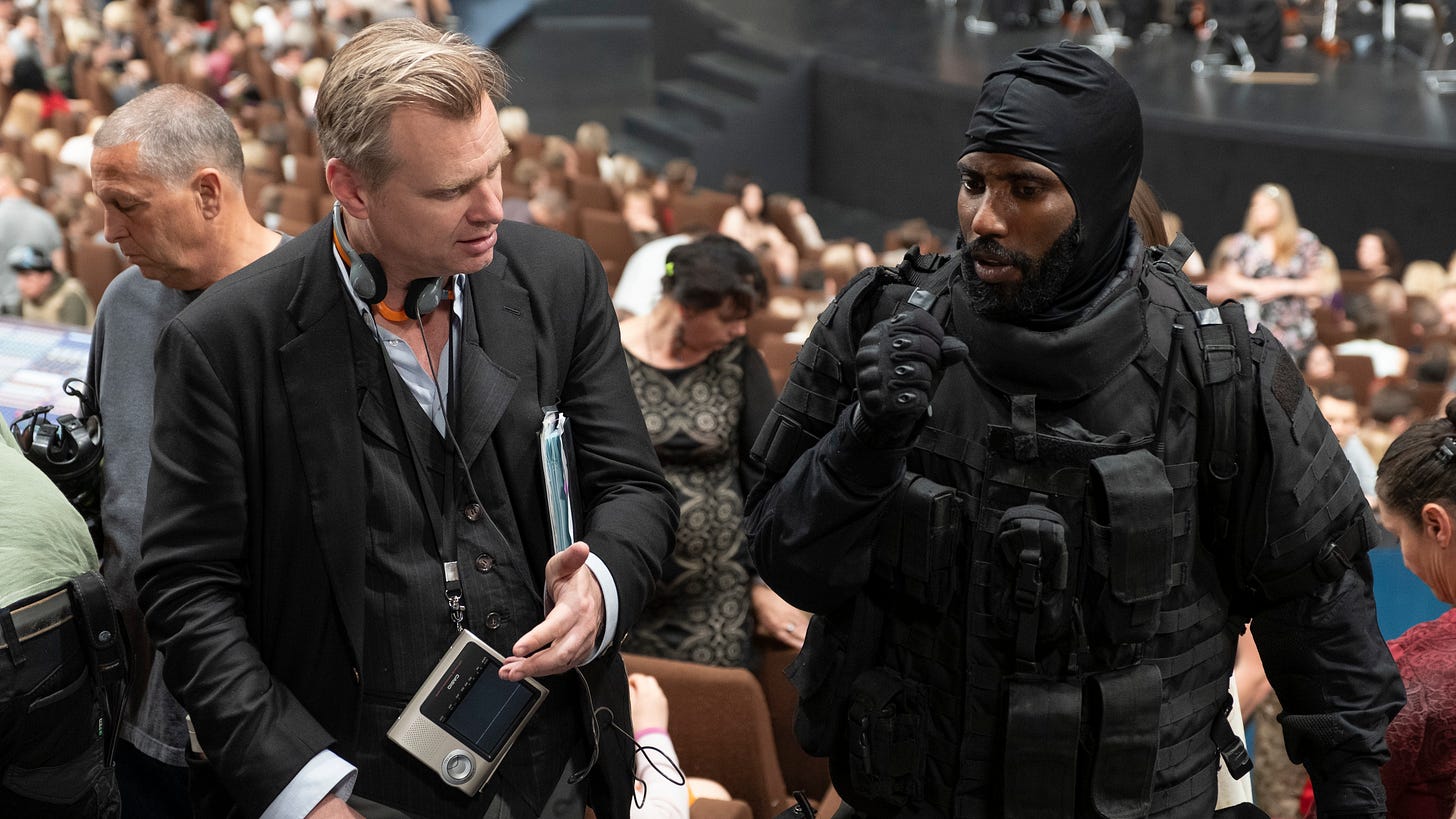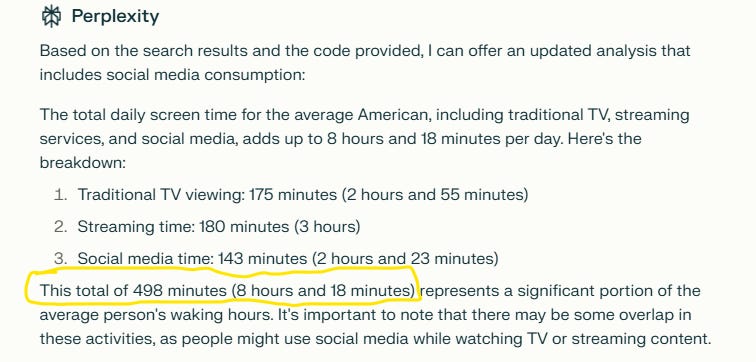Esoteric Tips for Cold Calling Success - Blinding Yourself In Order To See (Part 2)
Paint a picture of your prospect's world by taking yourself out of yours
Intro
Today, we’re going to be building upon the visualization powers you started to develop in Part 1 - this time by applying them in live time conversation with your prospects.
When I was at Apex Revenue, Justin Middleton would remind us daily to “paint a picture of your prospect’s world and THEN paint yourself in to it.” Shared understanding is the basis of all communication, and subsequently the bedrock of trust. Reps commit cold calling malpractice when they launch into product pitching prior to painting a picture, stepping back and saying: “Is this what you’re seeing as well?”
Thankfully, one of the most powerful weapons you have in your arsenal to massively improve your ability to paint this picture is something that:
Costs 0 dollars
You’ve been doing since birth
There’s a 25-33% chance you’re doing literally right now
You do 13,440 to 16,320 times per day
You spend 5-8 hours nightly already doing
Do I have your attention?
Keep reading to find out more.
You know how your computer gets really slow when you have a lot of windows and tabs open?
It turns out your brain works the same way.
“Cognitive Load Theory” is a model of human information processing that suggests the brain has a finite amount of processing power. When you're performing a visually demanding task, like parking, auditory distractions (like loud music) consume part of this limited cognitive "bandwidth." By reducing auditory input, you're freeing up processing power for visual and spatial tasks, thus improving your ability to spot park safely. Studies on cross-modal interference—the way different sensory inputs can interfere with one another—show that in demanding situations, reducing sensory input from one channel can enhance processing in another.
In A New Hope, Obi-Wan puts a helmet with a blast shield over Luke Skywalker’s eyes during lightsaber training. Luke has to rely on his other senses, specifically his ability to “feel” the Force in order to deflect the shots from a remote training droid without the use of his vision. Obi-Wan uses this tactic to teach Luke to focus and trust his instincts, highlighting how removing sight can enhance perception and concentration in other areas.
The Exercise(s)
It’s important that we regulate our practice environment in accordance with the level of our skills.
After all, did Obi-Wan put Luke in front of Darth Vader and have him close his eyes amidst a duel to the death? Of course not.
In the same way, jumping immediately from not doing any visualization to shutting your eyes for the first time on a discovery call is more likely to get you hacked to tiny pieces by Darth Prospect than result in anything productive.
So here’s my first challenge to you:
Call a friend or family member to catch up and take a genuine interest in what’s happening in their life by asking them questions.
Become “The Director”: As they’re answering, shut your eyes and begin to construct a movie in accordance to what you’re hearing - weave a rich, visual narrative using what the person you’re talking to in as great a detail as possible.
The word “movie” is intentional. As humans we are drawn to narratives: The average American spends approximately eight hours a day consuming visual content. We are all the stars of our own life story, and most people spend their entire days as the “main character” - if you can put aside your ego, detach and powerfully serve the person in front of you as if they’re the last person on earth , you can facilitate the co-creation of their desired reality.
This is the “secret” to charisma: We’re all so wrapped up in ourselves and projecting that image internally and externally that when somebody comes along and assists us in that process, there’s a “polarity shift” (H/T Justin Michael) and we become magnetic. Dale Carnegie said it best: “To be interesting, be interested” - most people don’t listen so much as they wait their turn to talk, so you’ll stand out in the best way by listening with this level of attentiveness.
Using Questions To Direct The Movie
As you co-create this visual narrative with your counterparty, clarify the gaps in what you’re seeing just as you would if you were shooting a movie together. Pay close attention to the verbiage the person you’re talking to is using and back into their style of absorbing information. Jeff Meyers (former Palantir/SalesForce/Oracle/ADP) blew my mind with this one. People will fall into one of the following styles of information processing:
Auditory"It sounds to me like..."
"What I'm hearing is..."
"Let’s talk through this..."
"Do you resonate with this idea?"
"I’m listening for your thoughts on this..."
"This echoes what we've discussed before..."
"Tell me if this rings true for you..."
"How does this resonate with you?"
Kinesthetic
"It feels like..."
"I sense that..."
"This idea seems grounded in..."
"Are you comfortable with this approach?"
"Does this align with your intuition?"
"I’m getting a strong impression of..."
"Let’s get a feel for this..."
"How does this sit with you?"
Visual
"It looks like..."
"What I'm seeing is..."
"Picture this scenario..."
"Does this look clear to you?"
"From my perspective, it appears..."
"Envision how this might work..."
"This paints a picture of..."
"Are you seeing this the way I am?"
Sales people are taught to “be curious” and “ask questions”, but it’s a fine line between co-creation and interrogation. By aligning with your conversational partners’ learning style (which is fundamentally a reflection of how they perceive and view the world) and keeping the movie front and center, your questions will be welcomed rather than answered defensively. It’s important to note you won’t always get this one 100% right, which is why it’s better to start out flexing this muscle with friends and family vs. in professional sales conversations.
Another heuristic you can leverage comes by way of an oft-cited study from Robert Cialdini’s Persuasion. Researchers went to a university library with the goal of testing three different approaches to persuading students lined up in front of a copy machine to let somebody cut in front of them:
Simple Request Without a Reason: The researcher simply asked, “Excuse me, I have five pages. May I use the Xerox machine?” Compliance was around 60%.
Request with a Valid Reason: The researcher added a legitimate reason, saying, “Excuse me, I have five pages. May I use the Xerox machine because I’m in a rush?” Compliance shot up to about 94%.
Request with a Trivial Reason: To see if the specific reason actually mattered, the researcher used a less compelling justification, saying, “Excuse me, I have five pages. May I use the Xerox machine because I have to make copies?” Surprisingly, compliance remained high at around 93%, almost identical to the rate with a valid reason.
The takeaway? If you’re asking questions, attaching a “why” increases the probability they’re answered significantly.
This is the difference between: “Can you walk me through your current process for processing customer orders?” and “We solve for a lot of different problems in the order processing supply chain - just so I can speak to what’s going to be most relevant for you, would you mind terribly walking me through your current process for processing customer orders?” - the latter also makes creative use of negative labeling, but that’s a lesson for a different day :)
Conclusion
Today, we walked through both a quick tip to heighten your focus and serve as a better conversational partner, and then how to ask better questions that align with your counterparty’s way of seeing the world to co-create the outcomes they want to experience - while becoming a more charismatic person in the process.
Start out developing these skills in conversations with friends and family, then progress to doing so in your professional interactions. I promise your life will be changed for it.
As always, if I can serve you in any capacity, please email me at charles@needham.co
To your success,
Charles









Loving the neuro and psychology topics, something isn't spoken about enough in the field. Thanks for shedding light on this. Would love your thoughts on creating "flow", "mindfulness", whatever the folks call it these days. If you're anxious one day, excited the other, how do you lock in?